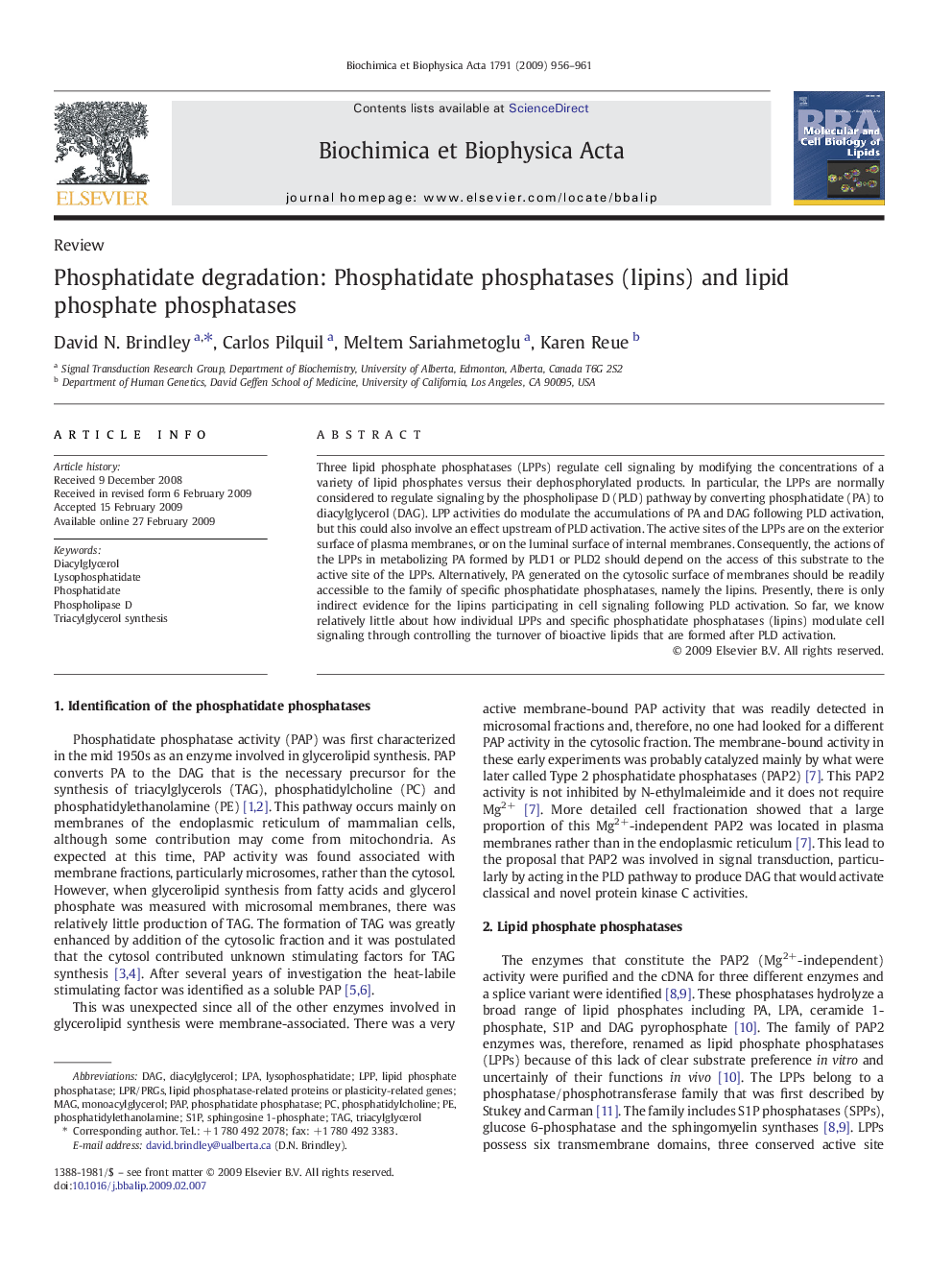| کد مقاله | کد نشریه | سال انتشار | مقاله انگلیسی | نسخه تمام متن |
|---|---|---|---|---|
| 1949850 | 1537785 | 2009 | 6 صفحه PDF | دانلود رایگان |

Three lipid phosphate phosphatases (LPPs) regulate cell signaling by modifying the concentrations of a variety of lipid phosphates versus their dephosphorylated products. In particular, the LPPs are normally considered to regulate signaling by the phospholipase D (PLD) pathway by converting phosphatidate (PA) to diacylglycerol (DAG). LPP activities do modulate the accumulations of PA and DAG following PLD activation, but this could also involve an effect upstream of PLD activation. The active sites of the LPPs are on the exterior surface of plasma membranes, or on the luminal surface of internal membranes. Consequently, the actions of the LPPs in metabolizing PA formed by PLD1 or PLD2 should depend on the access of this substrate to the active site of the LPPs. Alternatively, PA generated on the cytosolic surface of membranes should be readily accessible to the family of specific phosphatidate phosphatases, namely the lipins. Presently, there is only indirect evidence for the lipins participating in cell signaling following PLD activation. So far, we know relatively little about how individual LPPs and specific phosphatidate phosphatases (lipins) modulate cell signaling through controlling the turnover of bioactive lipids that are formed after PLD activation.
Journal: Biochimica et Biophysica Acta (BBA) - Molecular and Cell Biology of Lipids - Volume 1791, Issue 9, September 2009, Pages 956–961